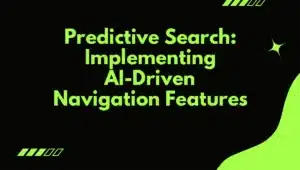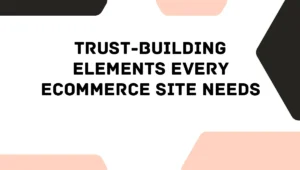What Do Web Designers Do? (And What They Don’t)
In an increasingly digital world, the role of a web designer has never been more crucial. as the architects of our online experiences, web designers transform concepts into captivating digital landscapes that engage users and elevate brands. Yet, despite their significance, the public perception of what web designers do can be surprisingly misleading. Do they conjure entire websites from the ether, or is there more to their craft? In this article, we delve into the multifaceted world of web design, clarifying not only the essential tasks that these professionals undertake but also the boundaries of their expertise. Join us as we navigate through the intricacies of web design—unveiling both the artistry and the practicalities that define this dynamic field. At Cham Agency, we appreciate the art and science behind web design, and we’re excited to shed light on the vital role web designers play in shaping our online presence.
Understanding the Core Responsibilities of Web Designers
At the heart of a web designer’s role lies the intricate task of creating visually compelling and user-kind websites. This involves a deep understanding of design principles,color theory,typography,and layout composition. A triumphant web designer not only shapes the aesthetic appeal of a site but also ensures that it aligns with the brand’s identity and meets the needs of its audience. Their work frequently enough includes the following core responsibilities:
- Design Creation: Transforming ideas and concepts into engaging visual designs.
- User Experience (UX) Design: Developing intuitive navigation and user pathways.
- Responsive Design: Ensuring websites look grate on all devices and screen sizes.
- prototyping: Creating wireframes and prototypes to demonstrate design concepts.
- Collaboration: Working with developers, content creators, and stakeholders to bring the design to life.
Furthermore, web designers are tasked with keeping abreast of the latest trends and technologies in the digital landscape. They harness various design tools and software to craft unique web experiences while adhering to best practices of search engine optimization and performance standards. Additionally, the role frequently enough involves:
- Accessibility Considerations: Implementing design elements that ensure all users can navigate the website effectively.
- Testing and Evaluation: Conducting usability tests and gathering feedback to refine designs.
- Content Aesthetics: Collaborating with copywriters to ensure that text and design are harmonious.
- Brand Promotion: Designing elements that effectively communicate the brand message.
Navigating the Design Process: From Concepts to Launch
In the intricate tapestry of web design, the journey from an initial concept to a polished launch involves a series of meticulously crafted stages. First, designers immerse themselves in understanding the needs and goals of the project, transforming vague ideas into tangible blueprints. This phase often includes conducting research, sketching preliminary designs, and wireframing key components. By iterating on these designs, web designers ensure that the visual elements and user interface align with the desired functionality, ultimately creating a robust user experience.
As the project progresses, collaboration becomes pivotal, especially through the progress phase. Feedback loops between designers,developers,and stakeholders ensure that the design evolves without losing its integrity. Notably, web designers aren’t just responsible for aesthetics; their role encompasses the careful consideration of user accessibility, responsiveness across devices, and SEO best practices. In this phase, the design is fine-tuned, and testing is conducted to iron out any usability issues. Once these elements are seamlessly woven together, the final product is primed for launch, ready to captivate users and fulfill its intended purpose.
The fine Line: What Falls Outside a Web Designer’s Role
While web designers play a pivotal role in creating visually stunning and user-friendly websites, there are distinct boundaries to their responsibilities. Their primary focus lies in the aesthetics and usability of a site, such as layout, color schemes, and typography. However, this does not extend to areas such as:
- Content Creation: Crafting the text, images, and videos that resonate with the target audience.
- SEO Strategy: Developing complex strategies to enhance site visibility and ranking on search engines.
- Technical Development: Writing code and scripts or managing backend server functions, which typically falls under the developers’ domain.
Furthermore, while some designers acquire skills outside their core expertise, clients should recognize the limits of what a web designer can deliver.Engaging in marketing strategies, for instance, goes beyond design. It involves:
| Role | Obligation |
|---|---|
| Web Designer | Focus on layout, visuals, and user experience |
| Content Strategist | Plan and create engaging content |
| SEO Specialist | Drive organic traffic through optimization |
| Web Developer | Handle coding and technical implementation |
Essential Skills and Tools Every Web Designer Should Master
Mastering the essential skills and tools of web design is crucial for anyone looking to thrive in this dynamic field. At the core of web design are HTML, CSS, and javascript. These foundational languages allow designers to create visually appealing and functional websites. Additionally, familiarity with responsive design principles ensures that sites not only look great on desktops but also adapt seamlessly to mobile devices. Proficiency in using tools like Sketch or Adobe XD can help streamline the design process, enabling designers to prototype their ideas rapidly and with precision.
Moreover, effective web designers should also be well-versed in UX/UI principles, as understanding user behavior is key to creating intuitive interfaces.Knowledge of tools like Figma for collaborative design, and also Adobe Photoshop for image editing, can greatly enhance a designer’s capabilities. Emphasizing performance optimization and SEO basics ensures that websites are not only user-friendly but also easy to find. Below is a simple overview of recommended skills and tools:
| Skill/Tool | Purpose |
|---|---|
| HTML | Content structure and layout |
| CSS | Styling and layout adjustments |
| JavaScript | Interactive elements and functionality |
| Figma/Sketch/Adobe XD | Design and prototyping |
| Performance Optimization | Improving site load speed |
| SEO Basics | Enhancing visibility on search engines |
Concluding Remarks
In the ever-evolving digital landscape, web designers serve as the architects of our online experiences, crafting everything from seamless user interfaces to striking visual identities. Their expertise lies not just in the aesthetic, but in understanding user behavior, accessibility, and functionality. As we’ve explored the multifaceted role of web designers, it’s clear that they are not just code wizards nor purely artistic visionaries; they are strategic collaborators, melding creativity with technology to bring concepts to life.
however, it’s essential to recognize the boundaries of their responsibilities. While they possess a wealth of skills, web designers are not the sole custodians of the digital realm. Their work is complemented by developers, content creators, and marketers, forming an ecosystem where each plays a pivotal role in a successful online presence.
As you navigate the vast world of website creation,keep in mind the intricate dance that web designers perform—balancing form and function,user satisfaction and business goals. Understanding what they do, and what they don’t do, not only brings clarity but also gratitude for the craft. So, whether you’re planning to embark on a project or simply curious about the process, remember: great web design is less about individual genius and more about collaborative brilliance. Embrace the journey, and let the web designers lead the way into a visually engaging and user-friendly digital future.





